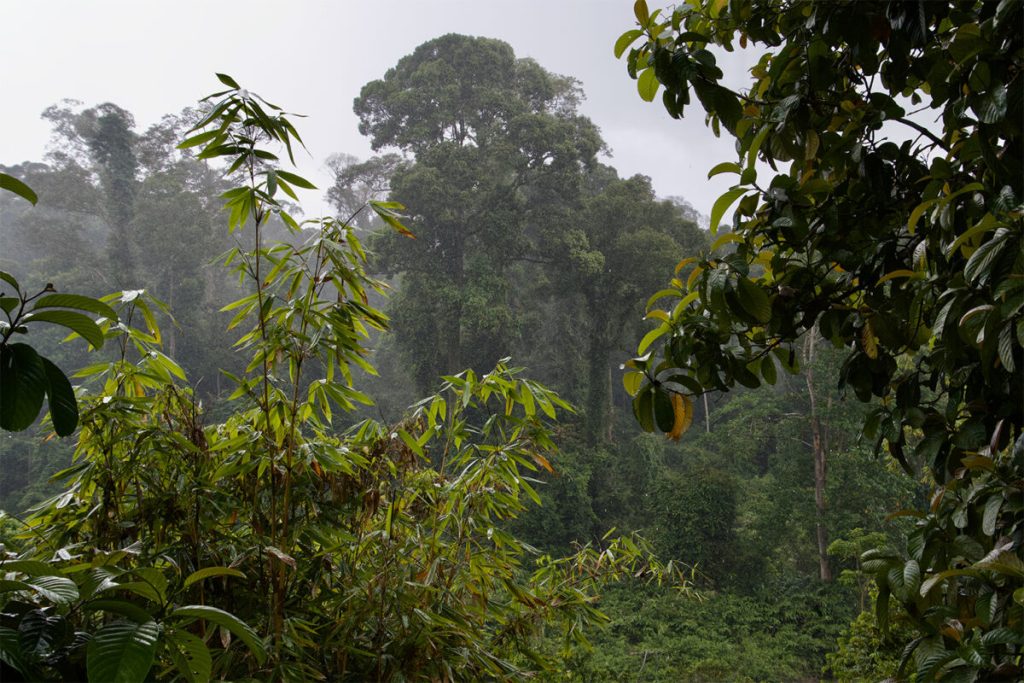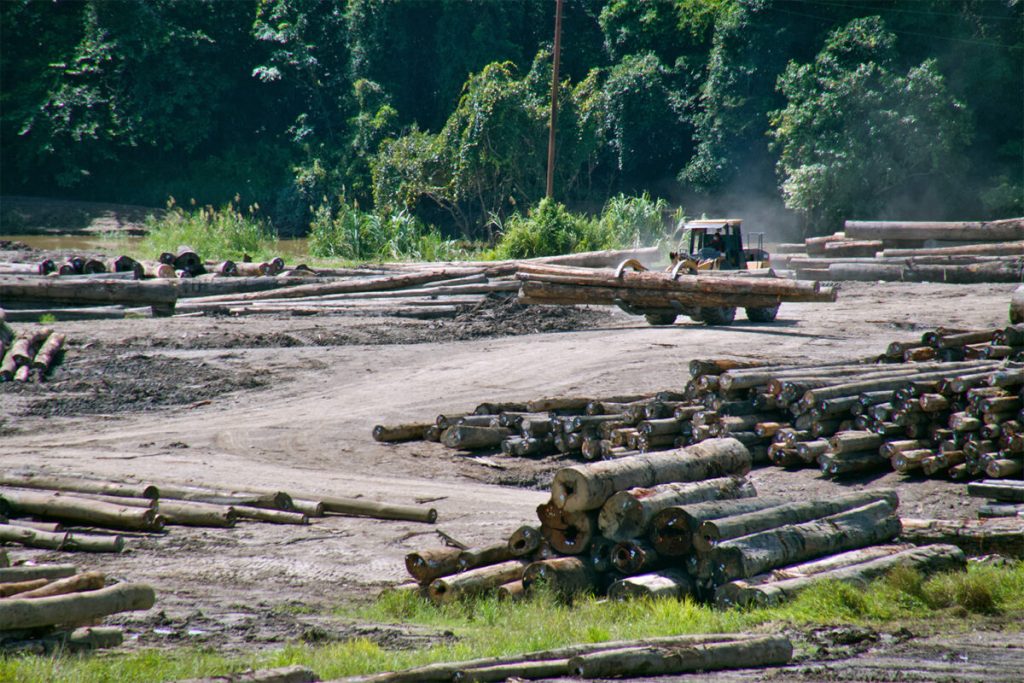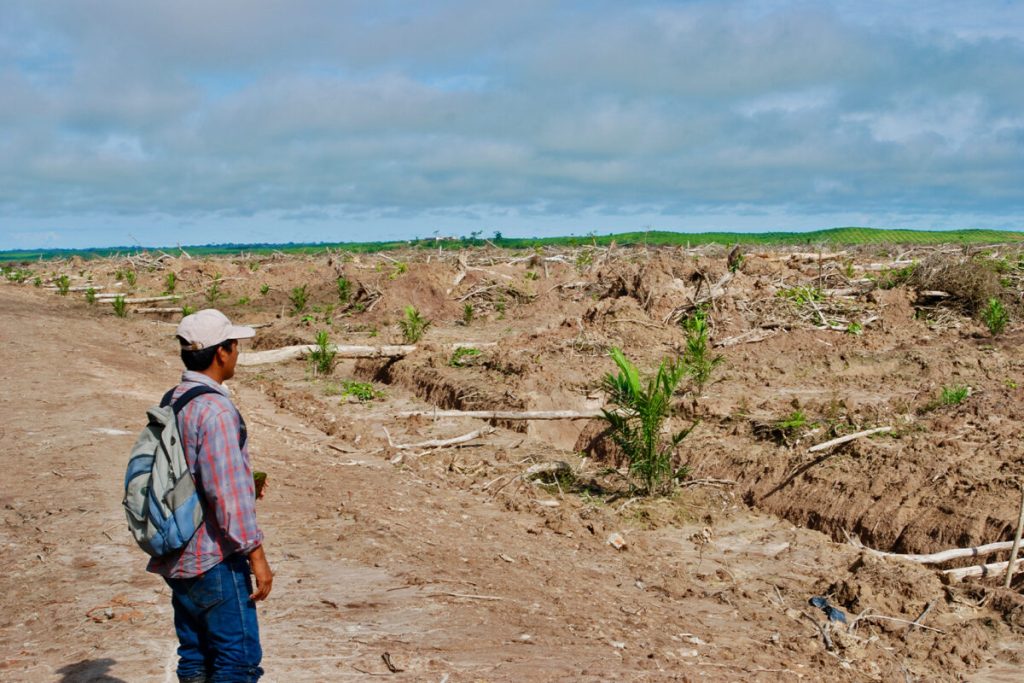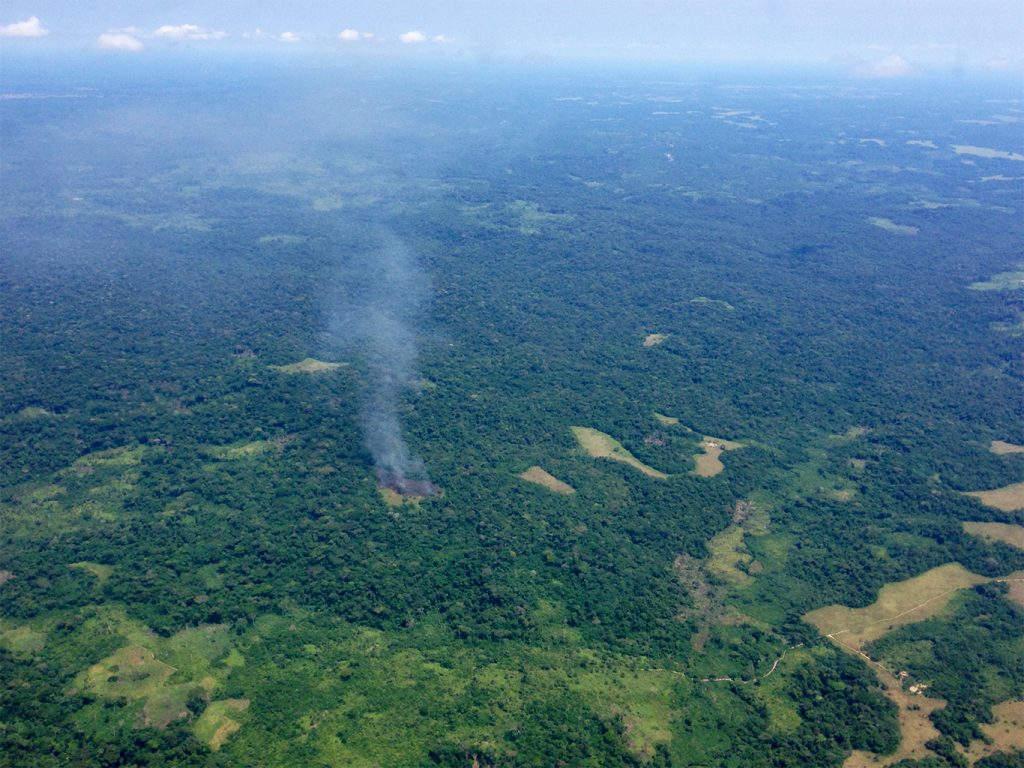This impact story was originally posted by Mongabay here, you can find the article discussion on jurisdictional approach to REDD+ in the second half.
- Observers predicted that 2023 would be a “make-or-break” year for voluntary carbon markets and “an inflection point” for their role in addressing climate change and global deforestation.
- Amid criticisms around carbon accounting, carbon neutrality claims, and issues with forest communities, governance bodies say they’ve worked to increase consistency and “integrity” for the voluntary carbon market and specifically the forest conservation strategy known as REDD+.
- Concerns remain from a variety of observers, including those who say the focus of credit-buying companies should be on eliminating their carbon emissions from across their entire suite of operations.
- But proponents of markets say that while decarbonizing is absolutely necessary to minimize the rise in global temperatures, the carbon trade allows for the mitigation of pesky residual emissions that it’s either impossible or too expensive to get rid of at this point.
In the view of many experts and observers, the voluntary carbon trade faces a set of divergent possibilities for its future, and a marked change seems imminent after critiques of the approach reached a fever pitch in 2023.
Amid those concerns, opinions have perhaps never been as polarized, particularly when it comes to the credits derived from forest carbon projects. Some say the trade is a vital part of stemming rising temperatures and deforestation. They note that it channels much-needed funds toward protecting forests.
But others swear it’s a distraction impeding progress toward a zero-emission — and potentially cooler — future. These opponents of carbon markets say the process for calculating credits from forest carbon projects is fundamentally flawed because it incentivizes overcrediting that stems from inflating both the risk of deforestation and the efficacy of projects meant to address it. What’s more, critics argue, the whole system allows the biggest emitters, mostly in the Global North, to outsource their climate action to less-industrialized tropical forest countries.
While there are many project types, the largest subset is classified as REDD+, which is short for reducing emissions from deforestation and forest degradation. REDD+ projects tend to focus on the massive carbon sink available in tropical forests, and they account for roughly a quarter of all carbon credits issued, according to the Berkeley Carbon Trading Project.
Reporting from the U.K.’s The Guardian, Germany’s Die Zeit and the journalism nonprofit SourceMaterial in January 2023 called into question the climate benefits of an overwhelming majority of REDD+ credits. The analyses crystallized long-standing concerns and, in doing so, prompted a change in the way credits and the idea of offsetting emissions are viewed.

Major companies like EasyJet, Nestlé and United Airlines are backing away from offsetting their carbon footprints by investing in these types of credits. They’ve voiced concerns about the integrity of the credits and appear fearful of charges of greenwashing. In May, Delta Airlines was sued for claiming to be “the world’s first carbon-neutral airline.” Companies that continue to aim for offset-based neutrality open themselves up to criticism. Take Apple with its Series 9 Watch, which it claims is carbon neutral.
Notably, the Voluntary Carbon Markets Integrity Initiative (VCMI), an international nonprofit, called for a move away from claims of carbon neutrality based on offsets, in favor of framing investments in carbon credits as contributions to climate mitigation beyond their efforts to decarbonize operations.
Amid this turmoil, credit prices on the voluntary market have fallen sharply, and projections indicate the market will fall short of the peak value it reached in 2021 of $2 billion.
“These various controversies and articles that have happened recently seem to have really caused a problem [for the voluntary markets]. I hope that’s a blip,” said Edward Mitchard, an ecologist and co-founder of the U.K.-based company Space Intelligence, which provides data and mapping to nature-based projects as well as to Verra, the world’s largest carbon credit certifier. “The nature-based solutions market carries on growing, but it definitely seems like lots of REDD projects [and] REDD project developers are having lots of problems right now.”
Mitchard said he envisions a more optimistic future for the markets — and one that’s more hopeful for the planet: That “blip” fades, the market and certification bodies like Verra shore up confidence by improving carbon accounting, and the voluntary carbon markets and REDD+ remain, as he sees it, crucial pathways to fund forest conservation.
Proponents of forest-based carbon credits advocate an all-of-the-above strategy, arguing that sluggish climate-related regulation by governments means that markets, imperfect as they may be, are one of the few tools available now.
“We have to do everything,” Mitchard said. Faced with ongoing deforestation, he added, “Every additional bit of help you can do to get better than current policies is worth doing.”
That means leveraging REDD+ and the carbon credits they produce, said Josh Tosteson, president of Everland, a U.S.-based company that provides marketing and other support for REDD+ projects.
“No math gets you to climate stabilization without ending deforestation,” Tosteson said. “There’s no other mechanism, really, than the voluntary carbon markets at this point in time that gets you there.”
Mitchard said if the world can meet the goal of ending deforestation by 2030, it could change the role of the market. Of course, that’s a big “if,” as deforestation continues apace: A recent assessment found that we’re falling behind on the reductions needed to end forest loss by the end of the decade.
Still, ending deforestation would mean a shift in focus for voluntary trading. Today, debate swirls around whether the focus should be on avoiding deforestation in standing forests, leading to a complicated — and some say dubious — calculus to figure out how much emissions reductions can be sold as credits, or on removing carbon by restoring degraded lands and replanting forests. Ecologists insist that while both strategies are important, protecting what’s left of tropical forests is imperative, and that lends support to the REDD+ projects that aim to keep forests standing and reduce emissions. They’re important carbon sinks, and they also provide habitat for biodiversity, regulate local and regional climates, and support communities. Plus, restoring a forest to full health can take many decades, if not longer.
If deforestation can be stopped by the end of the decade, the focus could switch to restoration. That would involve planting trees and helping degraded forest ecosystems recover. In turn, that would lead to more straightforward calculations of how much carbon those areas are pulling from the atmosphere. At the same time, the increased affordability and efficiency of technological applications like direct air carbon capture could boost their utility as climate solutions.

Current research suggests we must cut carbon emissions and do it quickly if the world is going to achieve the goal of staying below the 1.5° Celsius (2.7° Fahrenheit) rise in the global temperature over pre-industrial levels set forth in the 2015 Paris climate agreement. That starts with ending the use of fossil fuels, Mitchard said.
“The biggest thing we have to do for the climate crisis is to move our energy systems towards zero carbon,” he added.
The final agreement from the recent U.N. climate conference (COP28) in Dubai included a call for “transitioning away from fossil fuels.” It was the first time fossil fuel cuts were mentioned in a U.N. climate agreement, but it didn’t reach the level of demanding a “phaseout” that scientists and activists say is necessary to avoid the worst effects of climate change.
But reality may lead to something else entirely for the voluntary market.
“Where we are in 2023 is at an inflection point for the future of the role of carbon markets in overall climate mitigation,” said Frances Seymour, who was a distinguished senior fellow with the World Resources Institute at the time she spoke with Mongabay.
The question now is what role voluntary markets and carbon credits will play and whether they can provide a bridge to a future without deforestation.
‘A Price on Forests’
How much deforestation can REDD+ really halt?
“It’s not going to solve deforestation on its own,” Mitchard said.
A recent estimate from the Energy Transitions Commission, a coalition of energy leaders, found it would take $130 billion in annual spending to stop deforestation by 2030. Even supporters acknowledge that the $5.2 billion committed to REDD+ since 2008 amounts to little more than a small drop in that very large bucket of what’s required.
“Forest loss in itself is a singular problem that demands tremendous attention,” Tosteson told Mongabay. “We need to expand the resource investments by greater than tenfold at this point.”
Despite their imperfections, REDD+ and the voluntary carbon trade have shifted the conversation from one that views forests simply in terms of their “liquidated value” for timber, farmland or pasture, said Toby Janson-Smith, chief program development and innovation officer at Verra.
“By putting a price on the standing forests, it fundamentally changes the paradigm with all the actors within countries and throughout the landscape,” he said. “That includes governments, Indigenous communities, private landowners and others.”

As The Guardian-led reporting broke in early 2023, the REDD+ projects feeding into the voluntary market were already in the midst of a transition.
Specifically, they were dealing with squaring the credits sold from these individual projects with countrywide efforts to reduce carbon emissions. Among the Paris Agreement’s key initiatives was codifying the importance of nationally determined contributions, the emissions reduction goals that countries that have signed up to the agreement commit to on their path toward net zero.
Another critical part of the Paris Agreement is Article 6, which allows for the trading of credits for greenhouse gases between countries. Many see this inclusion as support for REDD+, allowing wealthy countries to compensate for their own outsized emissions while funding conservation in forested and often less-industrialized countries. But what happens when credits are sold to an outside buyer? Do both the buyer and the source of the credits get to count those emissions reductions?
Despite the framing of the 2015 Paris Agreement as a critical coming-together in the global fight against climate change, it didn’t resolve this double-counting issue, according to a recent commentary in the scientific journal One Earth. The authors point out that “trades between private parties do not require the seller’s host country to make a corresponding adjustment,” as envisioned in Article 6.4 of the agreement. That will inevitably lead to double counting, with a single metric ton of the CO2 equivalent being claimed by both the source country and the buyer, critics say.
The Jurisdictional Approach
Many involved in REDD+ say that moving toward jurisdictional crediting could help alleviate the problem of double counting. Seymour said it’s an issue that cropped up as REDD+ was just getting going at the 2007 U.N. climate conference in Bali, Indonesia. (She is currently with the Office of the Special Presidential Envoy for Climate in the United States, though her views are not necessarily the views of the U.S. government or the Special Presidential Envoy.) The goal from the beginning was to build REDD+’s accounting systems, as well as its safeguards, around jurisdictions, such as countries or large states or provinces.
But the call for “demonstration activities” snowballed, leading to more REDD+ projects that began feeding carbon credits to the voluntary market, she said. At the same time, a U.N.-backed system funded by Global North countries like Norway and Germany focused on results-based payments. Both systems claimed to be working toward REDD+ goals, which has led to confusion.
In late 2022, the South American country of Guyana sold $750 million in carbon credits to Hess, a U.S.-based petroleum company.
“I would argue that it was only with the December [2022] Guyana issuance that these two worlds started to intersect, where we had a market-based issuance of a jurisdictional-scale credit,” Seymour said. Calculations for the credits used a standard known as TREES, which is short for The REDD+ Environmental Excellence Standard, developed by an organization called Architecture for REDD+ Transactions (ART), of which Seymour served as board chair at the time she spoke with Mongabay. (She is no longer in that position.)
As COP28 began, Costa Rica and Ghana announced the sale of $60 million in jurisdictional REDD+ credits to several major corporate entities, including McKinsey, Bayer and the Walmart Foundation, that are part of the LEAF Coalition, a public-private partnership with the stated aim of ending deforestation by 2030.
“A problem that remains unsolved is what do you do with the legacy of all these projects and the advent of jurisdictional-scale crediting?” Seymour said.
Addressing the projects from a national level is seen by some as an antidote to the problem of double counting. It’s also meant to address problems like leakage, a term that refers to the displacement of deforestation — for example, if a REDD+ project’s activities slow forest loss, only to have farmers clear another area of land nearby that hadn’t previously been threatened by deforestation.
Such questions have led to tensions between the two REDD+ camps, as if it can only be one or the other. But that’s not the way Seymour sees it.
“A lot of people misunderstand that, if you’re an advocate for jurisdictional-scale crediting, that means that you’re anti-projects,” she said. “No, we need projects. We need place-based investments in activities. It’s just that they need to be aligned in an accounting and programmatic sense with the jurisdictional scale.”
Tosteson said projects have a stronger track record at this point and could help bolster the jurisdictional approach.
“[The jurisdictional approach] is not really a proven model, whereas the project intervention model is well-proven. It’s very well-established and well-demonstrated,” he said, “so the integration of the two modes in our view is really the way forward.”
In parallel, countries themselves have taken steps to gain more control over the projects within their borders. Indonesia, the Democratic Republic of Congo and Mozambique have passed laws that give these states ownership of the carbon held on their lands. To some, the motivations behind this step make sense.
“What we’re seeing is a very understandable move by national governments to say, ‘Well, it’s appropriate that we have some slice of the pie of the markets,’ particularly, of course, when you’re talking about forest resources that are [on] state land,” Tosteson said.
What’s more concerning are the strong-arm tactics of countries seemingly trying to gain full access to the profits from REDD+ projects.

In one particularly troubling example, human rights groups have accused government authorities in Kenya of evicting Ogiek communities from the country’s Mau Forest. They say that the quest for carbon credits is at the root of the move.
“There’s a distinction between the nationalization of a project and the creation of regulations and policy that includes and requires, among other things, sharing of proceeds with the government,” Tosteson said.
He pointed to Cambodia, which he said has struck a balance. (Everland works with the Keo Seima REDD+ project in eastern Cambodia.)
“They’ve got an appropriate revenue share between projects and the national government,” Tosteson said. “It leaves the vast majority of the resources for implementation on the ground.”
But a major concern is that countries will take too large a cut of the proceeds. That would diminish funding for forest conservation and economic development on the ground. It will also discourage REDD+ project developers from operating in the country, said Robert Nasi, chief operating officer of the global research and development organization CIFOR-ICRAF.
“They may say finally, we are not going to work in this country because of the changes in legislation,” Nasi said. “Translation: We are not going to work in this country because, fundamentally, we are not getting as much money as we expected.”
On the other hand, governments that take on more responsibility can play a positive role, Seymour said.
“The main reason is that it incentivizes governments to do what only governments can do to end deforestation at scale,” she said. “They have to stop illegality, which is 95% of the problem.”
COP28 and the ‘Inflection Point’
Much of the latest climate news is worrisome, from the emissions reductions required to keep temperatures down, to the results of the first global stocktake that culminated at the U.N. climate conference in Dubai. REDD+ and the voluntary carbon trade remain critical topics. Some say their existence — at least so far as it relies on broad global support — hangs in the balance.
Discussions at COP28 on Article 6.4 failed to reach a consensus to move toward a U.N.-backed market, delivering a potential setback to carbon markets in general. Observers say that disagreements arose around how much such markets should be regulated, with the U.S. supporting fewer restrictions. For now, the development of a global market will have to wait at least a year until discussions resume at COP29 in Baku, Azerbaijan, and with it, the boost to integrity and confidence it could lend to carbon trading.
But the lack of an agreement doesn’t prevent the voluntary carbon trade from continuing, said Lina Barrera, senior vice president of global policy and government affairs at Conservation International.
“The voluntary carbon market is already functioning,” Barrera said at a press briefing on Dec. 13. “It’s going to continue to function.”
The tumult of 2023 has pushed promoters of voluntary markets and forest carbon credits to both deal with the negative press and initiate reforms.
A concerning trend is the number of projects facing accusations of problems with accounting, certification and community safeguards. Two carbon projects in Kenya that have been heralded as models for the industry have faced accusations that the developers have dealt improperly with local communities. The certifier, Verra, suspended the issuance of credits in March from the Northern Kenya Grassland Carbon Project amid concerns about the changes it’s brought about in Indigenous livestock grazing practices, as well as its accounting methods. In early November, the Kenya Human Rights Commission released evidence of “systemic sexual abuse” by male employees of the Kasigau Corridor REDD+ Project inflicted on female employees and members of the community. U.S.-based REDD+ project developer Wildlife Works runs the Kasigau project.
Verra also paused credit issuances from Kariba, another high-profile carbon project in Zimbabwe, after an October 2023 story in The New Yorker magazine raised questions about its finances and allegations that trophy hunting was occurring within the boundaries of the project.
Following the issuance of Guyana’s credits under the TREES standard in late 2022, the country’s Amerindian Peoples Association (APA) complained about what they say was a lack of consultation over the inclusion of lands managed by Indigenous peoples. An array of NGOs and Indigenous groups from around the world have written an open letter urging ART to reconsider its dismissal of the APA’s complaint.

Africa, meanwhile, has become a major target for wealthy companies and countries looking to offset their emissions. The African Carbon Markets Initiative, or ACMI, comprising donors, conservation groups and corporations, says markets could provide perhaps $50 billion a year to finance climate mitigation and adaptation on the continent. But human rights groups say many African countries lack adequate protections for land rights and tenure, setting the stage for conflict and potential dispossession once these reportedly massive projects, which aim to increase the number of credits twentyfold, get going. Skeptical organizations like Kenya’s Power Shift Africa also say that plans for tree plantations to harvest carbon credits could threaten food security if they absorb valuable agricultural land. They also could cause problems for ecosystems if nonnative trees are planted.
Opinions about REDD+ and the voluntary carbon market remain divided, and Indigenous views on the subjects are similarly diverse. A coalition of “Global South voices” issued a letter in May 2023 cautiously supporting REDD+ as a way to direct climate financing to Indigenous peoples and local communities. More recently, however, another set of organizations has called for a moratorium on carbon trading until such activities explicitly “require respect for Indigenous Peoples and local communities’ carbon rights.”
Verra, meanwhile, has borne the brunt of the criticism directed at the voluntary carbon trade, as well as its own certification processes, as media coverage questioned the validity of claimed benefits of REDD+ and voluntary markets throughout 2023.
Despite its coordinated defense, particularly to The Guardian’s reporting, Verra says it welcomes “all actors in the space … sharing any concerns” about the organization’s practices. It also says the updates Verra has released over the past 11 months have been in the works for years, including the release of a new REDD+ methodology on Nov. 27. But it’s also learned that it needs to be more vocal in promoting the potential benefits of the carbon trade.
This year’s criticism has “woken up a lot of people in the community of the voluntary carbon market … who care deeply about climate action to recognize that the VCM has a critical, unique, urgent role to play in climate action,” Verra’s Janson-Smith said. “If it goes away, or is compromised … we’re going to have a big problem on our hands in terms of climate action.”
Verra and proponents of carbon credits acknowledge that the system isn’t perfect. But they also argue against “throwing the baby out with the bathwater” — that is, getting rid of a tool they contend has shown its potential, even if it has yet to fully realize what it can accomplish.
“I’m not going to paint you a picture that everything is a disaster, [or] that everything’s perfect,” Everland’s Tosteson said. “It’s more like, what’s good? What’s not so good? … Is the world better off for this or not?”
The answers to those questions have fractured the debate in many ways. Now, finding some semblance of a global consensus may dictate the future of the voluntary market and the efforts like REDD+ on which it relies.
Banner image: A teacher and farmer in Lukolela, DRC. Image by Ollivier Girard/CIFOR via Flickr (CC BY-NC-ND 2.0).
John Cannon is a staff features writer with Mongabay. Find him on Bluesky.
